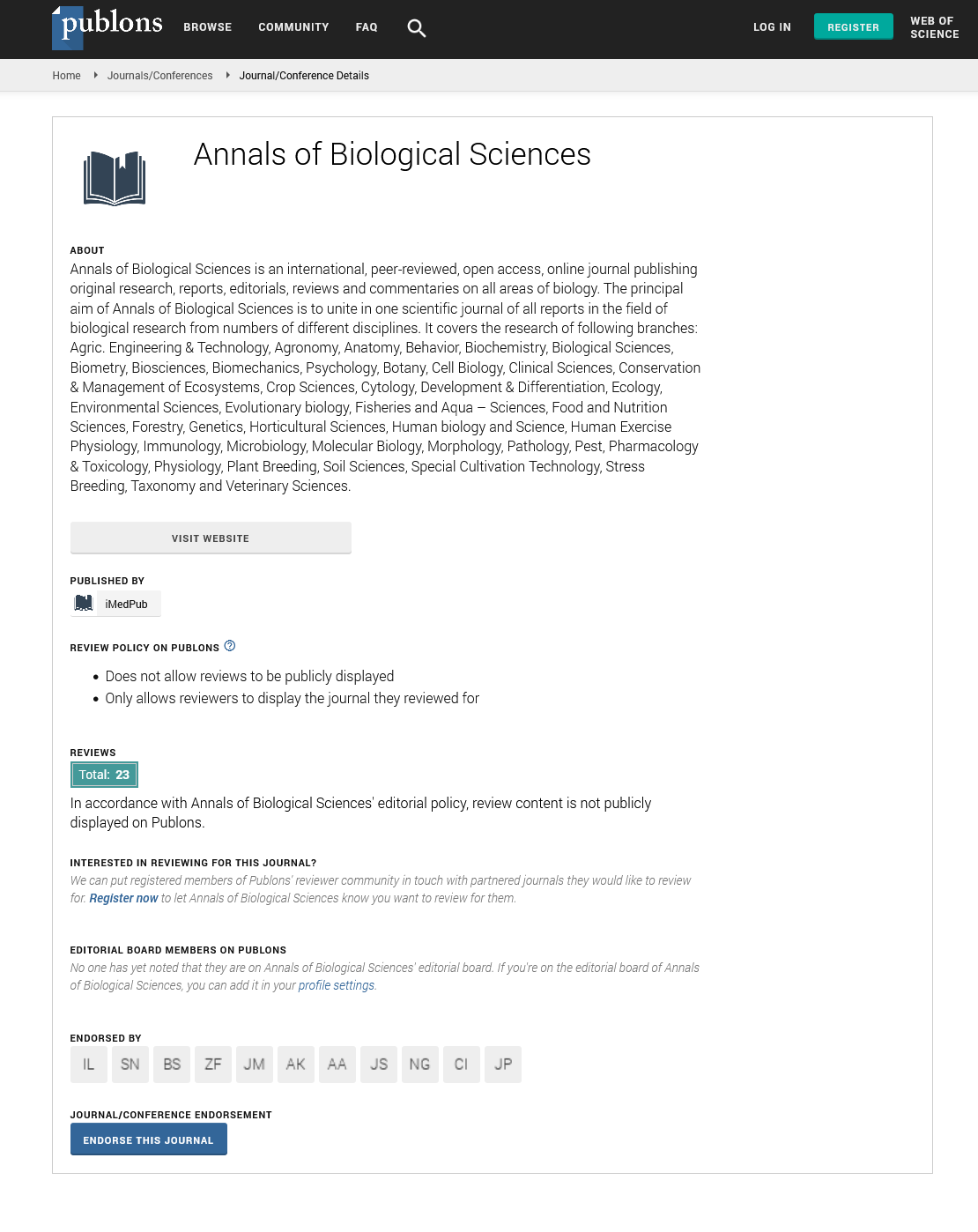ISSN : 2348-1927
Annals of Biological Sciences
Bottom-up strategies for reconstitution of multi-protein complexes using the baculovirus expression system
ANNUAL BIOTECHNOLOGY CONGRESS
August 17-18, 2017 | Toronto, Canada
Poterszman Arnaud
Starsbourg University, France
Keynote: Ann Biol Sci
DOI: 10.21767/2348-1927-C1-001
Abstract
The production of a homogeneous protein sample in sufficient quantities is an essential prerequisite not only for structural investigations but represents also a rate-limiting step for many functional studies. In the cell, a large fraction of eukaryotic proteins exists as large multicomponent assemblies with many subunits, which act in concert to catalyze specific activities. Genome editing allows to isolate native protein complexes produced from their natural genomic contexts but their limited natural abundance is often limited and so recombinant expression and reconstitution are then required. The baculovirus expression vector system (BEVS) has turned out to be particularly powerful, unlocking the structure and mechanism of many important complex assemblies that had remained inaccessible to detailed analysis beforehand. Here, we will comment on current developments and their potential to accelerate protein complex research: Use of Lambda red recombination in E. coli for manipulation and improvement of the baculoviral genome, vector development for parallel expression/co-expression screening and assembly of multigene constructs from synthetic biology approaches. As model systems, we will use human multi-protein complexes invoved in the regulation of gene expression such the pTefb cdk/cyclin pair, nuclear hormone receptor complexes or the 10 subunits transcription/DNA repair complex TFIIH. We will describe stateof- art strategies for the efficient production of multiprotein complexes using the baculovirus/insect cell expression system. Here, we will comment on current developments and their potential to accelerate protein complex research: Use of Lambda red recombination in E. coli for manipulation and improvement of the baculoviral genome, vector development for parallel expression/co-expression screening and assembly of multigene constructs from synthetic biology approaches. As model systems, we will use human multi-subunit transcription factors such as Cdk/cyclin pairs, nuclear hormone receptor complexes or the 10 subunits transcription/DNA repair complex TFIIH.
Biography
Poterszman Arnaud, after studying at ENS Cachan, completed his PhD from Strasbourg University and joined the CNRS one year later. He holds a CNRS Research Director position and performs his studies at the Department of Integrated Structural Biology at IGBMC, Illkirch France. He has a dual expertise in Structural and Molecular Biology, with insights on expression technologies and sample preparation. His research is focused on eukaryotic multi-protein complexes involved in transcription regulation and DNA repair by nucleotide excision, particularly, the transcription/DNA repair factor TFIIH and its partners. He has around 50 publications in Pubmed, h-index 21.
Google Scholar citation report
Citations : 406
Annals of Biological Sciences received 406 citations as per Google Scholar report
Annals of Biological Sciences peer review process verified at publons
Abstracted/Indexed in
- Google Scholar
- China National Knowledge Infrastructure (CNKI)
- WorldCat
- Publons
- ROAD
- Secret Search Engine Labs
Open Access Journals
- Aquaculture & Veterinary Science
- Chemistry & Chemical Sciences
- Clinical Sciences
- Engineering
- General Science
- Genetics & Molecular Biology
- Health Care & Nursing
- Immunology & Microbiology
- Materials Science
- Mathematics & Physics
- Medical Sciences
- Neurology & Psychiatry
- Oncology & Cancer Science
- Pharmaceutical Sciences
